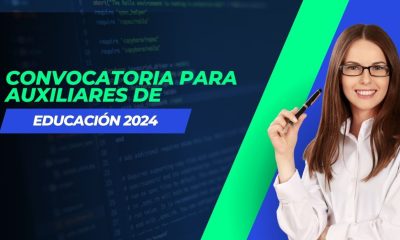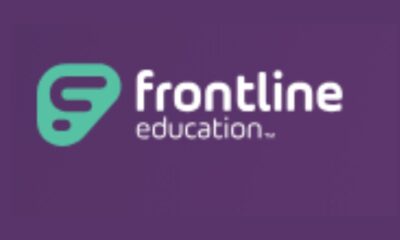EDUCATION
Pitsco Education: Shaping the Future of Learning

When it comes to innovation in the education industry, one firm that always leads the way is Pitsco Education. Pitsco has become a prominent name in educational solutions thanks to its long history and dedication to promoting experiential learning. Allow me to delve into Pitsco Education’s history, influence, and potential for the future.
The Evolution of Pitsco Education
Since its foundation, Pitsco Education has been a part of many remarkable events. Growing from its modest origins, the corporation has become a dominant player on a worldwide scale, impacting both the learning process and the way instructors impart knowledge. Embracing the ever-shifting educational landscape is an integral part of the evolution, which goes beyond just product development.
Pitsco Education Products and Solutions
Hands-On Learning Kits
Learning kits made by Pitsco are well-known for bringing classroom concepts to life. Students may participate in hands-on, experiential learning with these kits, which cover a wide range of disciplines.
STEM Curriculum Integration
In order to meet the challenges of a technologically advanced society, Pitsco incorporates STEM (Science, Technology, Engineering, and Mathematics) into its lessons without a hitch.
Technology in Education
Pitsco makes sure that education stays current by embracing technology. An engaging educational environment is created via the use of digital materials and interactive tools.
Pitsco’s Impact on Student Engagement
Pitsco’s method goes beyond merely teaching information; it aims to engage pupils in significant ways. Curiosity is piqued and learning becomes an exciting adventure because of the influence on student engagement in classrooms globally.
Success Stories and Case Studies
Case studies and real-life success stories show how Pitsco’s solutions have worked in the past. The results are clear, with higher interest in STEM subjects and better exam scores to boot.
Pitsco Education and Modern Teaching Techniques
Project-Based Learning
Pitsco promotes learning via projects, which have students address actual issues. The ability to think critically and solve problems is fostered by this method.
Experiential Education
Pitsco follows the principle of learning by doing. Students gain a solid grounding in abstract ideas and are better equipped to handle real-world problems through experiential learning.
Pitsco Education in the Digital Age
Online Resources and Platforms
Educators and students alike may take use of Pitsco’s abundance of digital learning tools and resources, which are available 24/7 online.
Virtual Learning Experiences
Virtual learning experiences are just one more way that Pitsco is dedicated to innovation. They create immersive settings that go beyond what is traditionally possible.
Collaborations and Partnerships
Collaboration is a powerful force, and Pitsco knows it. Pitsco broadens its influence and impact by forming partnerships with educational institutions and industry heavyweights, enhancing the educational experience in its entirety.
How Pitsco Supports Teachers
Professional Development
Teachers are given the tools to improve their teaching skills via Pitsco’s extensive professional development programs.
Teacher Resources
Educators have access to a wealth of materials that may help them design effective lessons and assessments.
Pitsco’s Commitment to Diversity and Inclusion
Pitsco understands that a diverse classroom is an effective classroom. Beyond selling things, their dedication is to creating a welcoming space that values diversity.
Challenges and Solutions in Education
Adapting to Technological Advances
Ensuring that educational solutions remain cutting-edge is a problem that Pitsco tackles by remaining current with technology changes.
Addressing Educational Inequities
Pitsco is committed to eliminating educational disparities and increasing educational accessibility and inclusion.
Future Trends in Educational Technology
Artificial Intelligence in Education
Pitsco explores the use of AI in order to build a future where tailored learning meets each student’s requirements.
Gamification in Learning
In light of the popularity of gamification, Pitsco investigates ways to bring gaming mechanics into the classroom.
Pitsco’s Sustainability Initiatives
Not only does Pitsco mold brains, but it also takes environmental care seriously. Sustainability initiatives demonstrate a commitment to enhancing both the educational system and the environment.
Testimonials from Educators and Students
If you want to know how big of an impact Pitsco has had, listen to the teachers and children who have used their education solutions firsthand.
Conclusion
Finally, Pitsco Education is more than a supplier of educational goods; it is an agent of constructive transformation in the field of education. Pitsco is revolutionizing education with their innovative digital solutions and hands-on kits.
FAQs:
How can I incorporate Pitsco Education into my classroom?
Pitsco has a wide range of programs and kits that are appropriate for students of varying grade levels. For personalized solutions, check out their website.
Are Pitsco’s products suitable for virtual learning environments?
Sure thing. In order to meet the demands of online classrooms, Pitsco offers digital learning experiences and online resources.
What sets Pitsco apart from other educational solution providers?
Pitsco stands apart by providing a well-rounded education via its dedication to diversity, emphasis on STEM integration, and emphasis on hands-on learning.
Do I need special training to use Pitsco’s products?
Educators at all levels can benefit from Pitsco’s products because of their user-friendly design and professional development opportunities.
How can I stay updated on Pitsco’s latest developments and offerings?
For the most recent information and updates, follow Pitsco on social media and subscribe to their newsletter.
EDUCATION
Expanding Horizons: Supporting Educational Outreach

Educational outreach initiatives play a vital role in broadening access to quality education, fostering community engagement, and nurturing a culture of lifelong learning. In this blog post, we’ll delve into the realm of educational outreach, exploring the significance of supporting learning initiatives and the transformative impact of expanding horizons through educational outreach programs.
Empowering Underserved Communities
Educational outreach programs aim to empower underserved communities by providing access to educational resources, mentorship, and skill-building opportunities. These initiatives bridge the gap in educational equity, enabling individuals from diverse backgrounds to pursue learning and personal development.
Collaborative Partnerships and Stakeholder Engagement
Successful educational outreach often hinges on collaborative partnerships with stakeholders such as schools, nonprofits, government agencies, and corporate sponsors. By leveraging diverse expertise and resources, these partnerships amplify the impact of educational outreach, reaching a broader audience and addressing multifaceted educational needs.
Enriching Learning Experiences
Educational outreach enriches learning experiences by introducing innovative teaching methods, extracurricular activities, and hands-on learning opportunities. These initiatives ignite curiosity, creativity, and critical thinking, fostering a holistic approach to education that extends beyond traditional classroom settings.
Mentorship and Role Modeling
Mentorship programs embedded within educational outreach initiatives provide guidance, support, and positive role modeling for participants. Mentors serve as invaluable sources of inspiration, offering insights, encouragement, and practical advice to help individuals navigate their educational and career pathways.
Digital Literacy and Access to Technology
In an increasingly digital world, educational outreach efforts prioritize promoting digital literacy and ensuring access to technology resources. By equipping learners with essential digital skills and tools, these programs prepare individuals to thrive in an interconnected, technology-driven society.
Career Exploration and Readiness
Educational outreach programs often incorporate career exploration activities and readiness workshops, exposing participants to diverse career paths and helping them develop the skills and mindset necessary for future professional success. Such initiatives instill confidence and ambition in pursuing meaningful careers.
Community Building and Social Impact
Educational outreach fosters community building and social impact by nurturing a sense of belonging, civic responsibility, and collective investment in education. These programs cultivate a supportive network that celebrates learning, fosters collaboration, and uplifts the entire community.
Bridging the Gap through B2G Marketing Strategies
In educational outreach, using B2G (Business to Government) marketing boosts visibility and effectiveness. Targeting governmental agencies secures funding, endorsements, and partnerships, amplifying program impact. Effective B2G strategies highlight educational benefits like social value, community enhancement, and lifelong learning promotion among underserved groups. This approach garners support and resources for lasting impact on educational programs.
Lifelong Learning Advocacy
Through educational outreach, advocacy for lifelong learning is championed, emphasizing the value of continual personal and professional development across all stages of life. By promoting a culture of lifelong learning, these initiatives instill a growth mindset and adaptability in individuals, encouraging ongoing self-improvement.
Cultural Exchange and Global Awareness
Many educational outreach programs embrace cultural exchange and global awareness, broadening participants’ perspectives and fostering cross-cultural understanding. Exposure to diverse cultures, languages, and traditions nurtures empathy, respect, and a deeper appreciation for global interconnectedness.
Partnerships with Educational Institutions
Collaborating with educational institutions, including K-12 schools and universities, enhances the reach and impact of educational outreach initiatives. Establishing partnerships with academic institutions enables the integration of educational outreach programs into formal curricula and student support services, amplifying their influence.
Conclusion
Educational outreach is a catalyst for expanding horizons, empowering individuals, and driving positive change through accessible, impactful learning initiatives. By supporting educational outreach efforts, communities can uplift and transform lives, creating a legacy of educational empowerment and lifelong learning. Embrace these strategies to champion educational outreach and contribute to a world where learning knows no bounds.
EDUCATION
Convocatoria para Auxiliares de Educación 2024

Educators from all over the globe are being sought after through the Convocatoria para Auxiliares de Educación 2024, often known as the Call for Education Assistants. Learn about the function of the educational auxiliary, how to apply, and the advantages, disadvantages, and possibilities that come with it in this in-depth essay.
What Does It Mean to Be an Auxiliary in Education?
When it comes to helping out instructors and educators in different classrooms, auxiliary aids are indispensable. Among their many roles is the facilitation of extracurricular activities, language immersion programs, and classroom support. Their primary function is to supplement students’ educational experience by providing them with useful materials.
Benefits of Being an Auxiliary in Education
Professional Development Opportunities
Among the many advantages of taking part in the Convocatoria para Auxiliares de Educación is the chance to advance in one’s career. Auxiliaries improve their leadership, organizational, communication, and hands-on experience in a classroom setting.
Contribution to Education
Becoming an auxiliary is a great way for folks to help enhance education all throughout the world. In the end, they help students have a more inclusive and enjoyable educational experience by bridging gaps in language acquisition, cultural understanding, and academic assistance.
Networking and Collaboration
There is an opportunity for auxiliaries to meet and work with administrators, teachers, and other auxiliaries from all walks of life. Through working together, they are able to expand their professional networks and experience other cultures.
Requirements and Qualifications
There are specific conditions and qualities that candidates must achieve in order to participate in the Convocatoria para Auxiliares de Educación 2024.
Educational Background
Applicants are often required to hold a Bachelor of Science degree in teaching, languages, or a closely connected field. Some programs may also provide preference to applicants with relevant work experience.
Skills and Competencies
The ideal candidate will be able to communicate clearly, understand and respect different cultures, and work well with people from different backgrounds. Depending on the position, you may need to be fluent in more than one language in addition to the language of teaching.
Language Proficiency
Given the nature of the position, fluency in the teaching language is absolutely necessary. Candidates may be asked to present standardized test results or language certificates as evidence of their language competency.
How to Apply for Convocatoria para Auxiliares de Educación 2024
Application Process
The application procedure usually entails uploading a résumé, cover letter, academic credentials, and an online application form. A personal statement and/or recommendation letters may be necessary for admission to some programs.
Necessary Documents
The program usually requests that candidates provide copies of relevant certifications or papers, such as certificates of language competency or educational qualifications, among others.
Deadlines
Please be sure you submit your applications by the dates and times given by the program administrators. Please ensure that all required papers are submitted on time; applications received after the deadline will not be considered.
Tips for a Successful Application
Tailoring Your Resume
To show that you are qualified for the position of educational auxiliary, tailor your resume to emphasize your relevant experiences, abilities, and credentials. Highlight your language skills, past tutoring or teaching experience, and cross-cultural understanding.
Highlighting Relevant Experience
Whether it’s working with kids, teaching languages, or being involved in educational projects, highlight any relevant experience you have. You can bolster your application by showcasing concrete instances of your contributions to educational environments.
Demonstrating Passion for Education
Tell kids how much you care about their education and how you intend to make a difference in their lives. Please elaborate on your interest in becoming an educational auxiliary and the benefits you and the students you will be working with stand to reap from this role.
Selection Process
Several steps, such as screening, interviews, and evaluation, are usually included in the selection process for the Convocatoria para Auxiliares de Educación.
Screening
As part of the screening process, applicants are examined to make sure they fulfill the program’s minimal criteria and credentials. Those that are qualified can move on to the next round of interviews.
Interviews
The next step is to invite the candidates who made the cut to an interview, which might take place in person or over video chat. Candidates get a chance to demonstrate their qualifications for the position and highlight relevant experiences during the interviews.
Assessment
Language proficiency exams, teaching demos, and situational judgment tests are some of the extra evaluations that candidates may have to complete. In order to determine if an applicant is qualified to serve as an educational auxiliary, program organizers use these tests.
Training and Orientation
Successful participants in the Convocatoria para Auxiliares de Educación get comprehensive training and orientation prior to beginning their new positions.
Preparation for the Role
Auxiliaries learn all they need to know about their jobs, duties, and expectations in the lead-up to the Role Training workshops. Cultural awareness, classroom management, and lesson preparation are some areas that they could want some help with.
Understanding Policies and Procedures
Codes of conduct, emergency procedures, and safety requirements are some of the regulations that auxiliary workers learn about. By familiarizing themselves with these guidelines, they may ensure a smooth transfer into their duties.
Placement and Assignment
Auxiliaries are placed at educational institutions all around the world once they finish training and orientation.
Location Preferences
During the application process, a candidate may be asked to select a placement site. Program criteria and availability, with preferences taken into consideration, decide final placements.
Role Assignments
Classroom assistants, language tutors, and cultural ambassadors are just a few examples of the auxiliary jobs that could be offered to them by the school. To thrive in these positions, you need to be able to pivot and change with the times.
Expectations
Professionalism in dealings with children, teachers, and the community, as well as a strict adherence to program standards and procedures, are all expectations of auxiliary workers.
Support and Resources
Education auxiliary workers are provided with continuous assistance and resources to enable them to excel in their positions.
Mentorship Programs
Through mentorship programs, some organizations provide new recruits with the chance to learn from more seasoned auxiliary members. Mentors guide new auxiliary through difficult times by providing guidance, sharing best practices, and offering counsel.
Access to Educational Materials
Educational materials, tools, and curriculum guidelines may be available to auxiliary workers so that they may better design and deliver courses. In order to accomplish their pedagogical goals, auxiliaries rely on these materials to supplement student learning.
Assistance Channels
Typically, program organizers would set up channels where auxiliaries may go to get advise or aid with things like administrative tasks, cultural adaptations, or even just their personal lives. Auxiliaries will feel supported during their assignments thanks to these outlets.
Career Growth and Advancement Opportunities
Opportunities for professional development and promotion abound for those who take part in the Convocatoria para Auxiliares de Educación.
Continuing Education
During or after their assignments, auxiliary workers may be able to take advantage of chances for continuing their studies or advancing their careers. Some examples of such programs are language classes, credentials to teach, or advanced degrees in subjects connected to education.
Promotional Pathways
Auxiliaries that demonstrate exceptional performance may be eligible for promotions that lead to leadership positions or career advancement opportunities within the company. Possibilities for mentoring, program coordination, or project management may arise in this context.
Challenges Faced by Auxiliaries in Education
Auxiliaries in education have many opportunities for growth and development, but they also face unique obstacles in their field postings.
Language Barriers
When deployed in settings where they do not speak the native language fluently, auxiliaries may find it particularly difficult to overcome linguistic obstacles. One way to overcome this difficulty is by utilizing language immersion techniques and effective communication skills.
Cultural Adaptation
Particularly for auxiliary stationed in foreign nations with diverse cultural practices, it can be difficult to adapt to a new social and cultural milieu. Adapting to a new culture might be easier with cultural sensitivity training and chances for cultural interchange.
Work-Life Balance
It could be difficult to juggle the responsibilities of the auxiliary position with other priorities, such as personal obligations and free time. To strike a good work-life balance, auxiliary workers may need to learn to control their emotions and set limits for themselves.
Success Stories
Testimonials from Previous Auxiliaries
Auxiliaries who have participated in programs like the Convocatoria para Auxiliares de Educación often speak highly of the program and its impact on their lives. These anecdotes show how the training helped people develop both personally and professionally.
Impact on Personal and Professional Growth
The Convocatoria para Auxiliares de Educación is a great opportunity for auxiliaries to develop both personally and professionally. In the process, they grow as people and acquire knowledge that will be useful in all their future pursuits.
Community Engagement and Integration
Participation in cultural exchange events and networking with local community members are highly encouraged for auxiliaries.
Involvement in Local Communities
Volunteering, attending cultural events, and participating in community activities are all great ways for auxiliary to become connected in the local culture and meet interesting people.
Cultural Exchange
Auxiliaries can promote cross-cultural understanding and appreciation by sharing aspects of their own culture with the populations they assist.
Building Relationships
Strong relationships formed with members of the community, instructors, and students lead to a more interesting classroom and more rewarding extracurricular activities.
Conclusion
The Convocatoria para Auxiliares de Educación 2024 is a great chance for anyone who want to make a difference in education all around the globe. Anyone may make a difference in the lives of kids all across the globe, get practical experience, and earn important skills by being an auxiliary.
FAQs:
What is the duration of the Convocatoria para Auxiliares de Educación placements?
A placement’s usual length might vary from a few months to an entire academic year, depending on program and placement-specific criteria.
Can I participate in the program if I don’t have prior teaching experience?
Though it’s usually helpful, having teaching experience isn’t necessary. Individuals that are enthusiastic about education and eager to learn are often welcomed by various programs.
Are there age restrictions for participating in the Convocatoria para Auxiliares de Educación?
Age restrictions are program-specific. Applicants of any age may be considered for some programs, while others have stricter age requirements.
Is financial assistance provided for travel and accommodation expenses?
Some schools provide financial aid in the form of stipends or grants that might help defray the cost of travel and lodging. However, this is decided by the course of study and the location of the placement.
What support is available for auxiliaries facing challenges during their placements?
Mentorship programs, psychological services, and administrative help are just a few of the ways in which program organizers make themselves available to auxiliary workers.
EDUCATION
Direct Educational Services: Revolutionizing Learning
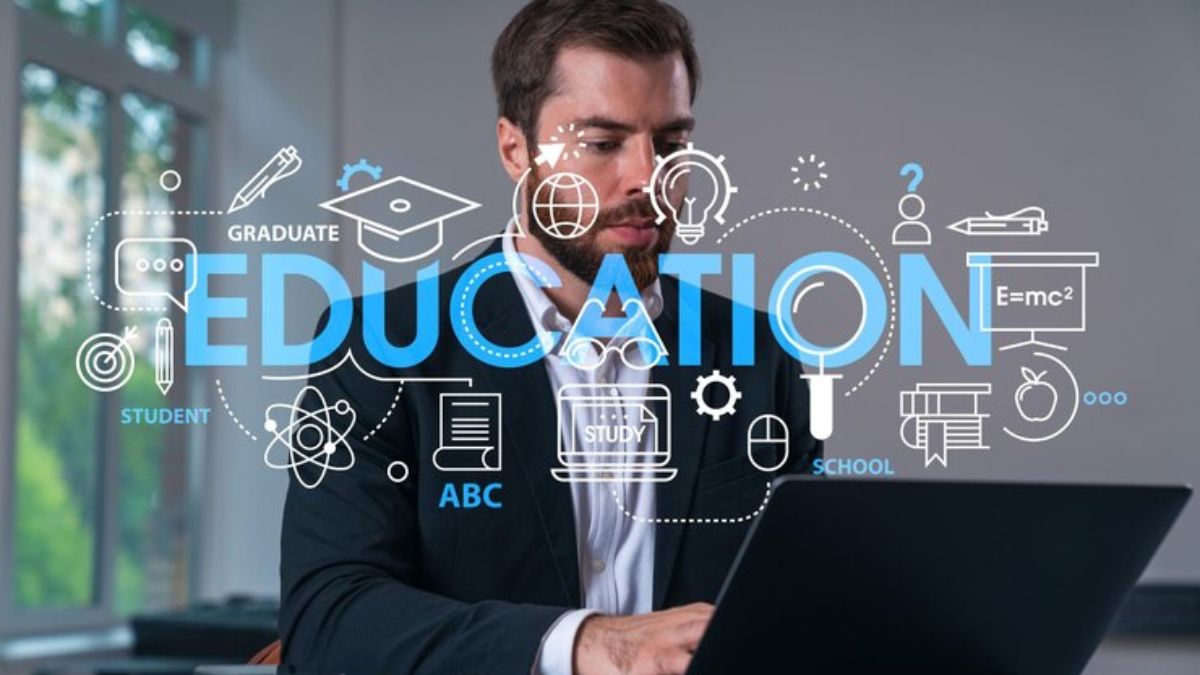
You have entered the revolutionary world of direct educational services, where knowledge has no bounds. To help you better comprehend the topic, we explore the relevance, difficulties, and developments of direct educational services in this article.
What are Direct Educational Services?
Individualized lesson plans are an integral part of direct educational services. Personalized techniques are the main emphasis of these services, which provide an atmosphere that is both dynamic and interesting for learning, as opposed to the more conventional approach.
Importance of Direct Educational Services:
The future of education is heavily influenced by direct educational services, which are of utmost importance. Students are more invested, which in turn improves their academic performance and fosters a lifelong passion for learning when lessons are personalized to their individual needs.
How Direct Educational Services Benefit Learners:
The advantages are numerous, ranging from catering to different learning styles to offering specific assistance. Students are given the one-on-one attention they need, which helps them feel empowered and confident as they go through their education.
Types of Direct Educational Services:
Explore many forms of direct educational services, such as individualized education programs, workshop formats, and tutoring services. An all-encompassing and flexible learning environment is guaranteed by the fact that each kind is designed to meet individual needs.
Personalized Learning Programs:
Investigate how well students do in individualized learning programs that allow them to move through the curriculum at their own speed. By laying a firm groundwork for future learning, this approach improves understanding and memorization.
Challenges in Direct Educational Services:
Despite the many advantages, there are still obstacles in the way of direct educational services. In order to successfully deploy direct educational service’s, it is essential to overcome obstacles including limited resources and reluctance to change.
Overcoming Barriers in Implementation:
Tackling obstacles calls for careful preparation and teamwork. Find effective ways to deal with opposition and work around limited resources so that direct educational service’s may be integrated smoothly.
Direct Educational Service’s in the Digital Age:
Make the most of the information technology revolution by providing direct educational service’s online. Find out how DSEs are improving students’ access to and engagement with education by utilizing technology to provide more interesting and relevant learning experiences.
Leveraging Technology for Better Education:
Investigate how technology, such as dynamic web-based platforms and comprehensive virtual experiences, might be used to enhance the educational process. Learn how these innovations prepare students for a tech-driven future and improve learning outcomes.
Key Players in Direct Educational Services:
Recognize the pioneers in the field of direct educational services; they are key players. These influential organizations, ranging from young, tech-savvy startups to long-standing, well-respected universities, are changing the face of direct educational services and the world as we know it.
Success Stories in Direct Educational Service’s:
See the difference via motivational success stories in direct education service’s. Feel the power of direct educational services as you observe the lives of kids being changed for the better.
Real-life Transformations:
Case studies demonstrating effective implementations provide insight into real-world transformations. Find out what worked by dissecting these success stories and applying what you learn to your own endeavors.
Case Studies:
Through the use of case studies, we can better understand the impact that direct educational service’s have had in the past. These examples show how individualized learning may boost students’ academic performance and engagement.
Analyzing Successful Implementations:
Discover the commonalities among successful situations by analyzing successful implementations. Gain an understanding of the critical success elements, which will serve as a guide for schools and teachers seeking to successfully adopt direct educational service’s.
Innovations in Direct Educational Service’s:
Take a look ahead at what’s to come. Learn about the latest innovations influencing the future of direct educational service’s, such as gamified education and AI-driven learning systems.
Future Trends and Developments:
Look forward to how direct educational services will change in the future. Discover how the educational environment will be even more inclusive and successful as a result of future trends and advances that improve the learning experience.
Direct Educational Service’s and Student Success:
Determining the relationship between direct educational assistance and student achievement is an important goal. Investigate research that has quantified the effect on student performance in the classroom to back up claims that individualized instruction works.
Measuring the Impact on Academic Achievement:
Investigate studies and research that demonstrate how direct educational service’s improve academic results. Gain an appreciation for the ways in which individualized instruction helps students succeed and gets them ready for what’s to come.
Addressing Concerns about Direct Educational Service’s:
In order to achieve broad acceptability, it is essential to address concerns regarding direct educational service’s and dispel myths and misunderstandings. Get to the bottom of people’s frequent questions and concerns about direct educational service’s by answering their questions and providing explanations.
Common Misconceptions and Clarifications:
Clear the air by addressing common misunderstandings, such as those on cost and efficacy. Make direct educational service’s more accessible and effective by providing explanations backed by evidence.
Best Practices for Implementing Direct Educational Service’s:
Follow recommended practices to successfully complete the installation process. From outlining specific objectives to performing continuous evaluation, these suggestions cover all the bases and ensure the effective and lasting integration of direct educational service’s.
Ensuring Effectiveness and Sustainability:
Thorough explanations of what works ensure a successful rollout. In order to make sure that direct educational service’s are successful and sustainable in the long run, educators and institutions should follow these strategies.
The Future of Direct Educational Service’s:
Conclude with some thoughts on how direct educational service’s will continue to adapt to new circumstances. Think about where you are now and where you want to go, drawing attention to your dedication to constant growth and innovation.
Evolution and Continuous Improvement:
As we wrap up, let us welcome the ever-changing landscape of direct educational service’s. With a dedication to offering students all across the globe exceptional educational opportunities, the future is filled with thrilling prospects.
Conclusion:
Finally, when it comes to innovation and individualized instruction, direct educational service’s shine brightest. This comprehensive guide has shown the significance, challenges, success stories, and future trends of direct educational services, further demonstrating their transformative impact.
FAQs:
Q: Are direct educational service’s suitable for all age groups?
Sure thing! Students of various ages, from those in elementary school to working people looking for continuing education, can benefit from direct educational services.
Q: How do personalized learning programs benefit students?
Personalized learning programs can enhance students. Comprehension and enthusiasm by adjusting their learning style and pace to suit their specific needs.
Q: What role does technology play in direct educational service’s?
By facilitating more accessible and engaging learning through the provision of interactive platforms. Virtual experiences, and tools driven by artificial intelligence, technology improves direct educational services.
Q: How can institutions overcome resistance to implementing direct educational service’s?
The best way to overcome opposition and create an atmosphere conducive to implementation is to communicate openly, highlight success stories, and include stakeholders in the decision-making process.
Q: Are there any notable success stories of students benefiting from direct educational service’s?
Sure thing! The article is filled with motivational success stories that show how direct educational service’s have improved students’ lives.
Q: What are the key factors for ensuring the sustainability of direct educational services?
The success and sustainability of direct educational service’s over the long term depend on having clear objectives, regularly assessing progress, and adjusting to changing educational environments.
-

 HEALTH1 month ago
HEALTH1 month agoSmile Wide: The New Dentist’s Guide to Launching a Successful Career
-
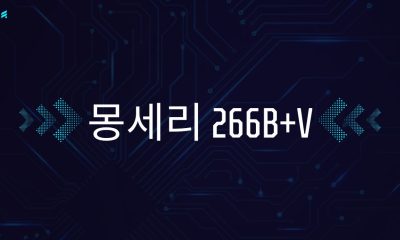
 TECHNOLOGY1 month ago
TECHNOLOGY1 month ago몽세리 266b+v: Unraveling the Mystery Behind It
-

 GENERAL1 month ago
GENERAL1 month agoTop Fertilizer Suppliers Malaysia: Boosting Agriculture with Quality Nutrients
-

 GENERAL2 months ago
GENERAL2 months agoHelping Hands:The Role of Employee Assistance Programs
-

 NEWS2 months ago
NEWS2 months agoLakewood News Network: Keeping You Connected Locally
-

 BUSINESS2 months ago
BUSINESS2 months agoFine-Tuning Success: Tips for Optimizing Your Advertising Agency
-

 GENERAL2 months ago
GENERAL2 months agoThe Unspoken Reality: Breaking the Silence on Unwanted Pregnancy
-
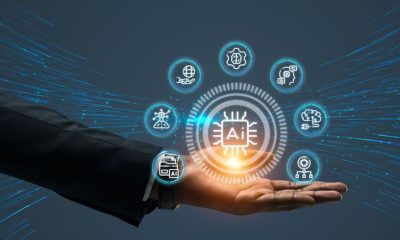
 BUSINESS1 month ago
BUSINESS1 month ago10 Business AI Tools by abc-media.net: Revolutionizing Your Workflow


